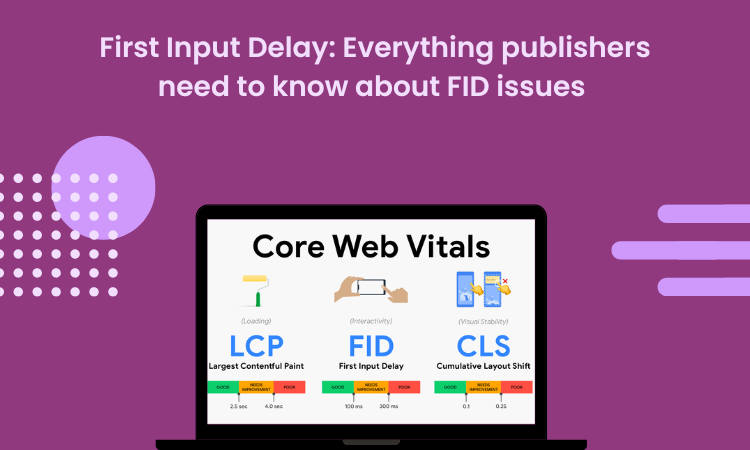Every business website strives to rank on Google’s first page in this highly competitive digital world. However, it is a strenuous task due to the ever-changing nature of Google algorithms. As propagation of its user-centric approach, Google introduced its Core Web Vitals ranking signals in 2021. It clearly indicated that publishers or websites that failed the Web Vitals score could be penalised. First Input Delay (FID) is one of them.
Today, optimising for Core Web Vitals is an integral part of SEO. First Input Delay is a key metric focused on improving your site’s performance and enhancing user experience. However, despite being active for over a year now, many publishers are still clueless about how to get an acceptable FID score. Those performing well have either relied on a smartphone app development company or have typically opted for the hit and try method, wasting their precious time. In this blog, we will share an overview of FID. So, let’s get started!
What is FID?
The first impression is paramount, and this is especially true in the case of FID. The first few seconds on a webpage are enough for a user to decide whether your website’s performance is up to par or not.
Critical page resources need to load in the first few seconds and block the browser’s main thread. The delay from a user first opening the page to the moment all critical resources are loaded is known as the First Input Delay.
People often confuse it with TTI, which measures the total time taken by a page to become fully interactive. FID tracks a user’s action before a page becomes fully interactive. It allows the browser to capture early interactions.
What causes FID?
Multiple factors affect FID, including images, videos, and unoptimised scripts. This results in a webpage reloading or pausing several times, causing the web page to become unresponsive to users while loading.
According to Google, FID happens when the browser’s main thread is busy doing something else, leading to a delayed response to the user. The large Javascript files are the main reason behind it.
How to measure the First Input Delay?
Many free tools are available to measure your FID score, but you can’t check it on ga4 google analytics. Using these tools will allow you to measure the FID and take timely measures. Some of them are the following:
What is considered a good First Input Delay score?
The Core Web Vitals score is divided into the following categories:
- Good: FID under 100 milliseconds offers a good user experience.
- Needs Improvement: A score between 100 and 300 milliseconds indicates the need for improvement.
- Poor: If the score is above 300 milliseconds, it means the site needs significant improvement.
How can you reduce FID?
Once you have measured your FID, you need to optimise it. There are multiple tactics that publishers can use to improve FID. Some of them are the following:
Remove unused Javascript
There could be unnecessary third-party Javascript codes running on your web page, sinking its performance. These scripts may be executed due to custom-coded functionalities or plugins. Try removing these codes to improve the FID score.
Consider deferring the script if the codes are essential for your website’s functioning. That way, the code will load only when it’s essential for a page to appear as designated or for specific functionality to become available.
Consider employing an “Idle Until Urgent” strategy. In this, the essential code is executed immediately, while other codes only run during idle periods. This is a great way to improve FID score.
Employ lazy loading
Lazy loading is an excellent way to boost page speed, especially for publishers using programmatic ads. By utilising this strategy, ads above the fold will load first, reducing the time it takes for the site to become fully functional.
The lazy-loaded ads placed below the fold will only load once they come into a user’s view. This not only improves the FID score but also enhances your ads’ viewability.
Optimise and minify Javascript
There are several plugins available nowadays that allow you to minify Javascript. It is a great way to ameliorate your FID score and push site performance. Minification of the Javascript and other unnecessary files results in faster rendering.
Conclusion
Core Web Vitals are a crucial ranking factor for SEO. It means publishers can’t afford to neglect them. A poor FID score can lead to dropped SEO ranking and other penalties. Fortunately, it is pretty easy to improve this particular metric. With the above tips, you can significantly enhance your FID score and keep your users satisfied.
In case of any query regarding FID, you can contact us anytime!


